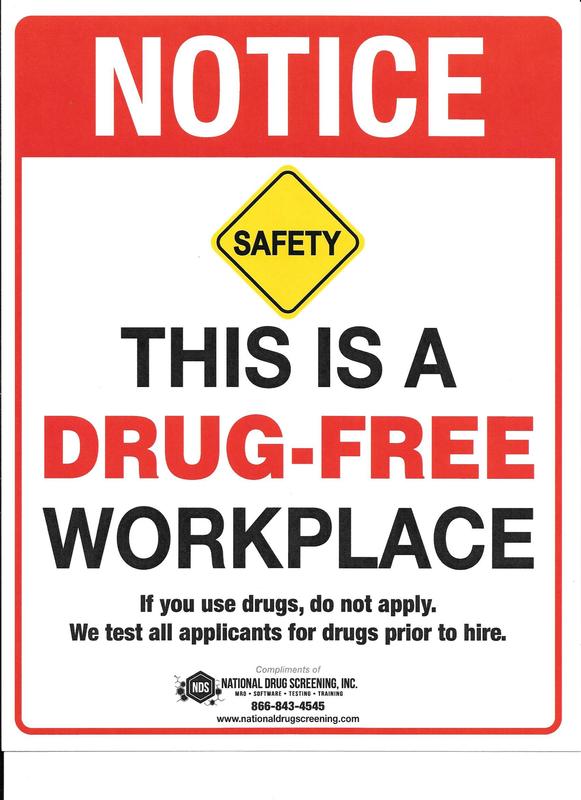Despite the belief that employer rights to a drug-free workplace would be protected in states where marijuana is legal, we continue to see these laws challenged in court. In Rhode Island, a judge ruled that a woman denied an internship before taking a pre-employment drug test had the right to bring suit against her would-be employer. In Massachusetts, a judge gave the same ruling after an applicant was told her medical marijuana use would pose no problem, but was then denied employment after HR stated that the company policy was to follow federal law. In Connecticut, yet another judge ruled that an applicant denied employment after failing a drug test had a right to bring suit against the employer. What do these companies and their ensuing court troubles have in common? They all lacked those elements of a drug testing policy that best protect an employer in this complicated legal environment.
Purpose and Clarity
A house divided against itself cannot stand. – Abraham Lincoln
“In order to know what kind of drug testing to do, you must first understand why you are drug testing,” says Bill Current, president of The Current Consulting Group, LLC (CCG). “One such objective common to most companies is concern for safety… Other common reasons include improving productivity; controlling the costs of doing business; increasing the overall health and well-being of employees and their families; and minimizing employee theft and other wasteful and costly behaviors.”
Whatever the reason, in order for a drug testing policy to be successful, it is critical to understand all of the company objectives for your drug testing program before writing and implementing a policy. Once the policy is developed supervisor and employee training are critical to its success. And one-time training is not enough. Ongoing training and readily available support material are also critical. Without this, as we saw in the Massachusetts case, misunderstanding company policy and how it is applied can result in significant cost.
Regular Review
Twice and thrice over, as they say, good is it to repeat and review what is good. – Plato
“Once a client develops their policy they assume it is once and done but that can be a costly mistake,” says Sharon Bottcher, Compliance Manager at CCG. “Each year there are changes to state laws and cases that impact policy compliance. An annual policy review is an important step and many employers use the policy updates as a reminder to have regular staff and management trainings … so each person understands the company’s process to handle situations as they arise.”
In each of the cases in our introduction there was a breakdown in communication between recruiters, managers, supervisors, and human resources and, ultimately, a lack of adherence to the policy. In multiple cases the recruiter made commitments to applicants about the company’s drug testing policy – specifically that medical marijuana use would pose no problem. However, human resources, when applying the policy, contradicted the word of the manager. When the two arms of a company’s recruiting body clash, it is a clear indicator that either the company’s drug testing policy lacked purpose and clarity or one of the involved parties did not understand and apply the policy. Even worse, it may mean that their policy, written, reviewed and approved, was not effectively communicated and enforced. In either case, the error opened the company to risk and with that risk, costs. Costs in time, legal fees and perhaps, fines.
There’s a test for that…
Look at situations from all angles, and you will become more open. – Dalai Lama
One of the biggest mistakes a company can make with its drug-free workplace policy is assuming that one size fits all. With the wave of states legalizing medical and recreational marijuana use, navigating each state’s laws to ensure compliance is no longer as simple as it used to be. There is no policy wizard or template that can whip together a policy that actually responds to all the situational needs a company has. A company that assumes it is compliant or knows it was compliant when it adopted its policy several years ago is likely non-compliant today.
There are many substance abuse testing options available to employers depending on their federal, state, and industry requirements, as well as their organizational needs. The most common test types consist of, but are not limited to, pre-employment, random, reasonable cause, post-accident, return-to-duty, and follow-up testing. Single-state companies may only have to check the laws of their home state, but need to be aware that in addition to drug testing statutes, there may be departmental regulations, workers’ compensation laws, unemployment compensation laws, medical or recreational marijuana laws, and, now more than ever before, case laws. A good policy takes all of these regulations, laws and cases into account, not only to ensure legal compliance, but also to maximize return-on-investment and minimize risk. Many states’ laws provide incentives to employers who maintain a drug-free workplace policy, such as workers’ compensation insurance discounts, claim reductions, or protection from litigation.
Conclusion
At the core of any successful drug-testing program is a written policy. Just as all companies are different, all policies will be different. Much depends on your company’s experience with worker substance abuse, as well as the safety-sensitive nature of the business and your company’s overall organizational objectives. Your company’s drug testing policy is your opportunity to clearly express your position on employee substance abuse. And an investment in a well-written, compliant policy will pay dividends in the end.







